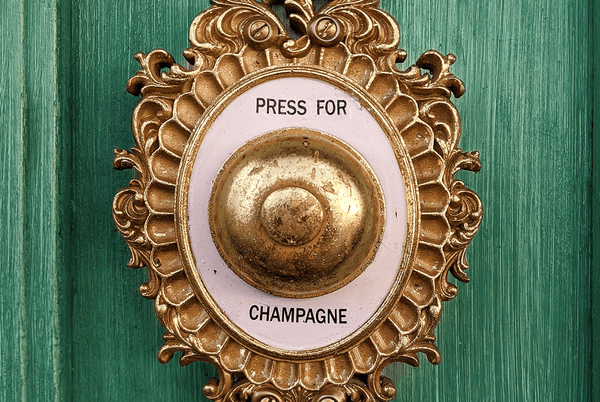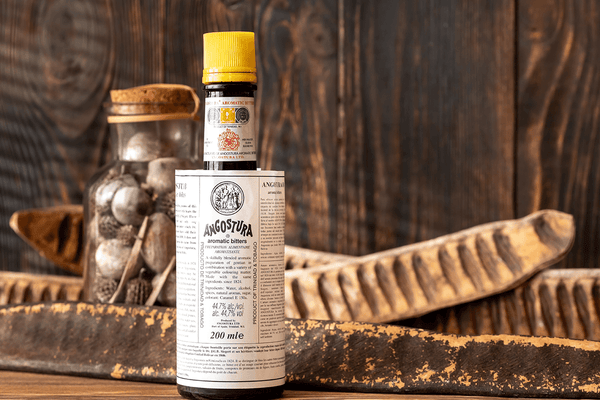WHAT IS SOUR MASH BOURBON?
While browsing through bourbon whiskey bottles, you may have come across the term "sour mash" on some labels. This term refers to how bourbon is made, not how it tastes. Before purchasing your next bottle of whiskey and giving sour mash bourbon a try, it's important to understand what it is and what makes it different from a regular bourbon...

What's the Difference Between Bourbon Whiskey and Sour Mash Bourbon?
As the saying goes, all bourbon is whiskey, but not all whiskey is bourbon. The same can be true for sour mash: all sour mash is bourbon, but not all bourbon is sour mash. Bourbon is only made in the United States and has to be made of at least 51% corn and aged in charred oak barrels to be labeled as such.
Sour mash refers to the way bourbon is produced. The term "mash" isn't referring to the physical mixing of the ingredients, but a grouping of ingredients that are used to create the next batch. The ingredients generally included in sour mash bourbon are grains such as barley, rye, or corn.
Tennessee and Kentucky is where they create most bourbons using the sour mash method, but only a few distilleries include the terminology in their marketing. Another way of creating bourbon is using the sweet mash method.
Why Is It Called Sour Mash Bourbon?
Any baker will tell you that the best way to make sourdough bread is to use what's referred to as "starter." In sourdough, the starter is fermented dough that naturally contains wild yeast and lactobacilli bacteria, which are the bacteria that make the bread rise. Sour mash bourbon, much like sourdough bread, uses leftovers from previous batches. The sour mash, or fermented ingredients, gives the bourbon a sweeter and more robust flavor. Some say sour mash gets its name from sourdough bread for this reason.
Souring can also refer to the process of adding more acid to the mixture when creating bourbon. A distiller adds acidity to help adjust the pH levels. This helps the mixture block out other microorganisms that could interfere with the fermentation process. Using some of the mash from previous batches allows distilleries to remain consistent with their flavors.
Sour mash refers to the grouping of grains used in the fermentation process. Typically, distilleries will use a one-to-three or one-to-four ratio with their sour mash. This means that for every sour mash bourbon batch, one-third or one-quarter of the mash is made up of an old batch, and the rest is new.
How Is Sour Mash Bourbon Distilled?
Bourbon is made with grain mash. The mixture of grain mash typically combines barley, rye, corn, and wheat. During the mashing process, the grains are crushed together and opened. Once the crushing is complete, they add hot water to bring out the sugars. When this happens, the pH levels rise.
One of the most important steps when making sour mash bourbon is lowering the pH levels after crushing the grains. A high pH level can be a breeding place for bacteria, which, of course, is detrimental to any beverage- or food-making process. Not only would it alter the flavor completely if bacteria got in, but it can also kill off any of the good yeast.
One method used to help balance the pH levels in a batch is using sour mash. The acidic leftovers from a previous batch will affect the overall pH levels of the batch. The pH levels will rise from an average level of 5.2 to 5.6. Once the pH level has increased, the yeast can do what it needs to without competing with other elements.
Adding the sour mash during the production process can vary depending on the distillery. Some choose to include the mash at the cooker stage. Others prefer to add the sour mash to the fermenters.
Where Did Sour Mash Bourbon Originate?
There's some debate about when the sour mash method was created. Most accredit Dr. James C. Crow with the formal creation of sour mash bourbon in the mid-1800s.
Dr. Crow was trained as a chemist and physician in Scotland before moving to the U.S. in 1820. He worked for several distilleries before Oscar Pepper hired him at the Oscar Pepper Distillery. One issue Crow and many other distilleries were facing at the time was maintaining the consistency of flavors from one batch to the next. By introducing this method, Dr. Crow was able to ensure that every batch produced by the distillery had the same great taste.
Despite technological advances in the spirit industry, distilleries in Tennessee and Kentucky continue to use the method developed by Dr. Crow centuries ago in their production process.
Sour Mash Bourbon vs. Sweet Mash Bourbon
Another way to make bourbon is using the sweet mash method. Sour mash bourbon was invented to solve a problem: consistency. With the advancement of technology, other methods have been developed and tested. To use the sweet mash method, a distiller needs to cook the grains, add the yeast, and let them ferment. There's no mixing of prior batches using the sweet mash method.
Some distilleries prefer to use the sweet mash method because it allows for greater control, although it's a much more manual process. However, there's more opportunity for bacteria to spread using the sweet mash method because the mash typically has a higher pH level. Distilleries that use this method need to be very aware of their sanitation processes.
One benefit of using the sweet mash method is the ability to control everything. A smaller distillery may choose to use this method to test out different flavors. Larger distilleries generally make sour mash bourbon because it's easier to produce in large quantities with little risk of anything going wrong.






